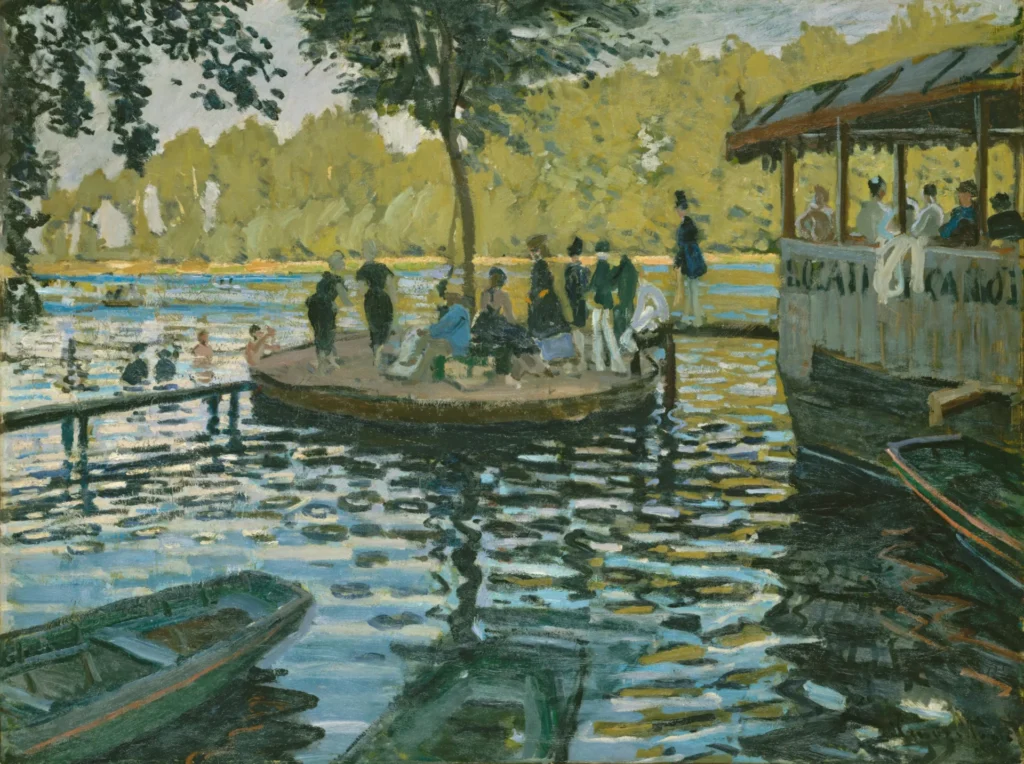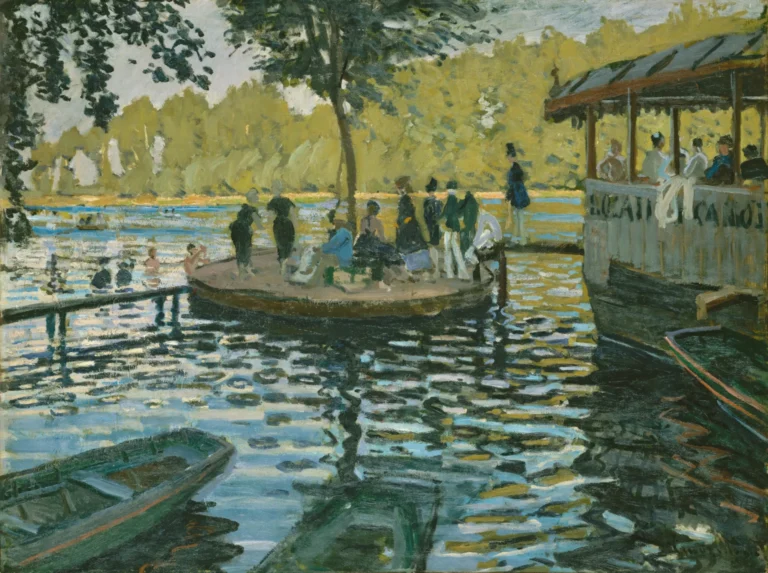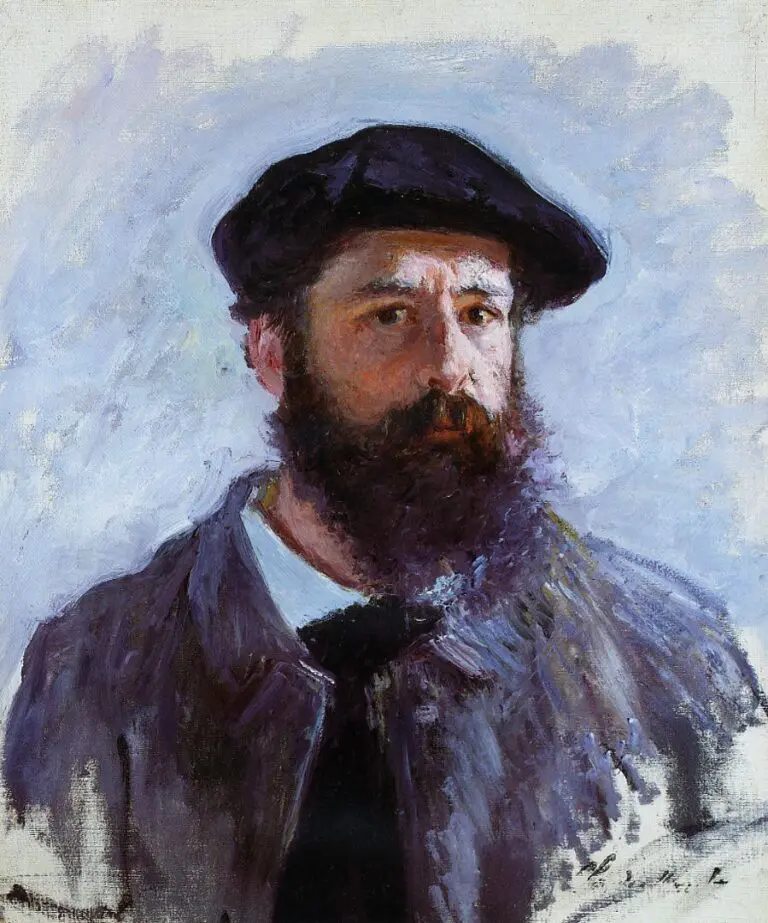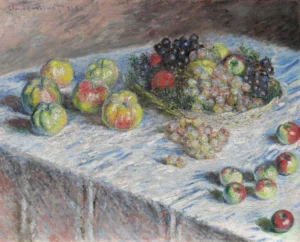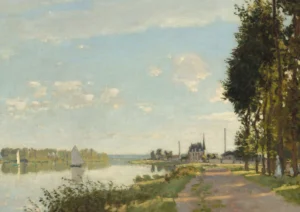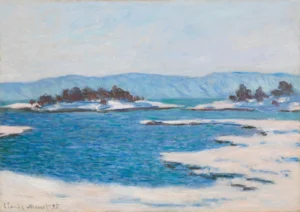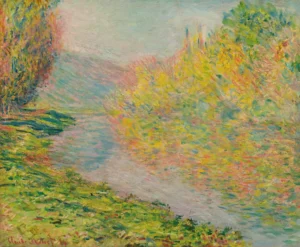La Grenouillere
'La Grenouillère' is a stunning representation of leisure at a popular resort located on the Seine River, painted by Claude Monet in 1869. This artwork is emblematic of the early Impressionist movement, showcasing Monet’s use of rapid brushstrokes and vibrant color contrast to capture the interplay of light on water. Created during a collaborative summer with Pierre-Auguste Renoir, this painting not only reflects their artistic experimentation but also their personal struggles, making it both a visually captivating and historically significant piece.
Year 1869
About the Artwork
Did You Know
Liked what you see? Add it to your collection.
Enjoyed reading? Share it.
... continued
Location and Setting
'La Grenouillère' was painted at a popular middle-class resort of the same name, located on the Seine River near Bougival, about 12 kilometers west of Paris. This resort, also known as 'Trouville-sur-Seine,' featured a spa, a boating establishment, and a floating café, making it a fashionable weekend retreat for the emerging middle class.
Collaboration with Renoir
Monet painted 'La Grenouillère' during the summer of 1869, while working alongside his friend and fellow artist Pierre-Auguste Renoir. Both artists were struggling financially at the time and were supported in part by the owner of La Grenouillère, Monsieur Fournaise, who accepted some of their paintings in exchange for food.
Technique and Style
The paintings Monet and Renoir created at La Grenouillère were characterized by their rapid execution and emphasis on capturing the fleeting effects of light and atmosphere. Monet used short, comma-like brushstrokes and juxtaposed sharply contrasting, unmixed colors to achieve a shimmering effect on the water. This technique was part of their experimentation with outdoor painting and contributed to the development of Impressionist methods.
Specific Works
There are several versions and sketches of 'La Grenouillère' by Monet: One version is housed at the Metropolitan Museum of Art in New York, depicting 'Flowerpot Island' (also known as the Camembert) and the gangplank to the floating restaurant. Another version is at the National Gallery in London, titled 'Bathers at La Grenouillère.' A larger, more finished painting intended for the Salon of 1870 was lost, but it is known from a photograph.
Significance
These works were part of Monet's project to create a large painting for the Salon of 1870, although the final piece was rejected. Despite this, the sketches themselves are highly valued for their directness, immediacy, and contribution to the evolution of Impressionist painting. They capture the essence of leisure activities and the play of light on water, emphasizing the decorative elements of light and color over detailed representations of figures.
Provenance
The version at the Metropolitan Museum of Art was bequeathed by Mrs. H. O. Havemeyer in 1929.




